Snowshoes let you walk on snow without sinking by spreading your weight over a larger surface area. They’re lightweight, easy to use, and perfect for winter hikes or fitness. Modern snowshoes include a frame, decking for flotation, bindings to secure your boots, and traction for grip on icy surfaces. They’re beginner-friendly and don’t require lessons - if you can walk, you can snowshoe.
Key Points:
- How They Work: Snowshoes distribute your weight across 120–300 square inches, preventing you from sinking into snow.
- Why Use Them: Affordable, easy to learn, and great for exploring snowy trails without needing expensive gear.
- Choosing the Right Pair: Match snowshoes to your total weight (gear included) and snow conditions. Larger snowshoes work better in deep powder; smaller ones are ideal for icy or packed trails.
- Bonus Option: For a more dynamic winter experience, check out Snowfeet - compact ski-skates that work with regular winter shoes.
Snowshoeing is an affordable, fun way to stay active in winter. Ready to give it a shot? :)
SNOWSHOES: Everything You Need to Know
How Snowshoes Work
Snowshoes make winter hiking in deep snow not just possible, but enjoyable. By spreading your weight across a larger surface area, they keep you from sinking into the snow. It’s like turning your feet into mini rafts for snowy terrain.
Main Parts of Snowshoes
Let’s break down the key components that make snowshoes so effective:
- Frame: This is the backbone of the snowshoe, usually made from lightweight aluminum or tough composite materials. These materials hold up well in freezing temperatures without becoming brittle.
- Decking: The decking fills the frame, giving the snowshoe its flotation power by increasing surface area. Modern decking materials are designed to shed snow easily, so you’re not lugging around extra weight.
- Bindings: These secure your boots to the snowshoes. They’re adjustable, even with gloves on, and provide a snug fit that doesn’t cut off circulation. Plus, they allow your heel to move naturally as you walk.
- Traction Devices: Think of these as the snowshoe’s “teeth.” Cleats and other grip features are strategically placed to help you tackle everything from hard-packed snow to slick, icy patches.
The Science Behind Snowshoes
Here’s the deal: when you walk in deep snow with regular boots, your body weight is concentrated in a small area, causing you to sink. Snowshoes, on the other hand, spread your weight over a much larger area, dramatically reducing pressure. This keeps you “floating” on the snow, even in soft, powdery conditions. It’s simple physics, but it feels like magic when you’re gliding over snowdrifts.
Of course, there’s a bit of technique involved to get the most out of your snowshoes.
Basic Snowshoe Techniques
Using snowshoes isn’t rocket science, but it does take a little practice. Here’s how to get started:
- Putting Them On: Adjust the bindings so your foot is secure and aligned, with the ball of your foot over the pivot point. A good fit is key to comfort and efficiency.
- Walking on Flat Terrain: Take slightly wider steps than usual to avoid the snowshoes bumping into each other. Lift your feet a bit higher than normal to clear obstacles. If your snowshoes do knock together at first, don’t worry - it’s a common rookie move and easy to fix with a wider stance.
- Climbing Uphill: Lean forward slightly for balance and use a firm step to engage the traction. In soft snow, a kick-step works well, while a solid stomp is better for crusty surfaces. Some snowshoes even come with heel lifts to make uphill climbs easier.
- Heading Downhill: Keep your weight on your heels and lean back just a bit to stay balanced. Bend your knees slightly and take small, controlled steps. If you feel yourself slipping, the safest move is to sit down briefly and regain your footing.
- Traversing Slopes: When moving across a slope (instead of straight up or down), angle your snowshoes across the hill. Press the uphill snowshoe into the slope to create a small ledge. For steeper slopes, you can use a side-step technique: face sideways, press one snowshoe into the snow, stamp to form a step, and bring the other snowshoe up.
- Using Trekking Poles: Poles are your best friend for balance and reducing leg strain. Adjust their length depending on the terrain - shorter for uphill, longer for downhill, and even for traversing slopes. If you take a tumble, try to fall uphill and use the poles to help you stand back up.
Snowshoes are straightforward once you get the hang of them, and with these techniques, you’ll be ready to tackle snowy trails with confidence!
How to Choose the Right Snowshoes
Getting the right snowshoes can make or break your winter adventure. The wrong pair might leave you struggling and sinking, while the right ones help you glide over the snow with ease. Here's how to pick the perfect pair for your needs.
What to Consider When Buying Snowshoes
When choosing snowshoes, two key factors come into play: your total weight (including gear) and the type of snow you'll encounter. These determine how well your snowshoes will keep you afloat and how easily you can move.
Total weight is the first thing to figure out. Snowshoes are designed to support your weight plus any gear you're carrying. Many models can handle up to 400 lbs, so make sure to check the weight capacity to avoid sinking into the snow.
"Decking material (synthetic fabric or plastic) sheds wet snow and resists wetting; frames are sized for user weight and pack weight to optimize flotation."
Snow conditions are the next big consideration. Think of it like choosing the right boat: for soft, deep powder, you’ll want larger snowshoes with more surface area to keep you on top of the snow. On the other hand, if you're dealing with packed snow, icy trails, or steep slopes, smaller, narrower snowshoes with built-in crampons will give you better grip and easier maneuverability.
"Variants exist: large, flat snowshoes for soft deep snow; narrower, lightweight 'racing' or backcountry models with crampons for steep or icy terrain."
The type of terrain matters, too. If you're sticking to groomed trails or gentle inclines, recreational snowshoes are your best bet. But if you're heading into rugged backcountry or steep, technical terrain, look for models with extra traction features.
Once you’ve got these basics down, it’s time to focus on sizing and how well your snowshoes work with your boots.
Sizing and Fit Tips
Snowshoes are categorized by weight to ensure they provide the right amount of flotation. Always check the weight range for the model you're considering.
Boot compatibility is just as important. Your snowshoes need to work seamlessly with your winter boots. Look for adjustable bindings that can fit a variety of boot sizes. Most snowshoes accommodate US Men’s sizes 4.5 to 16 (EU 36 to 50), but double-check the specs to ensure a good fit.
Now that you know how to pick the right snowshoes, you’re one step closer to mastering winter adventures. Next up: how snowshoes stack up against other winter gear. Stay tuned!
sbb-itb-17ade95
Snowshoes vs. Other Winter Gear
When it comes to winter adventures, there's a lot to choose from: traditional snowshoes, skis, snowboards, and Snowfeet*. Knowing how these options differ can help you pick the gear that best suits your plans.
Snowshoes vs. Skis, Snowboards, and Snowfeet*
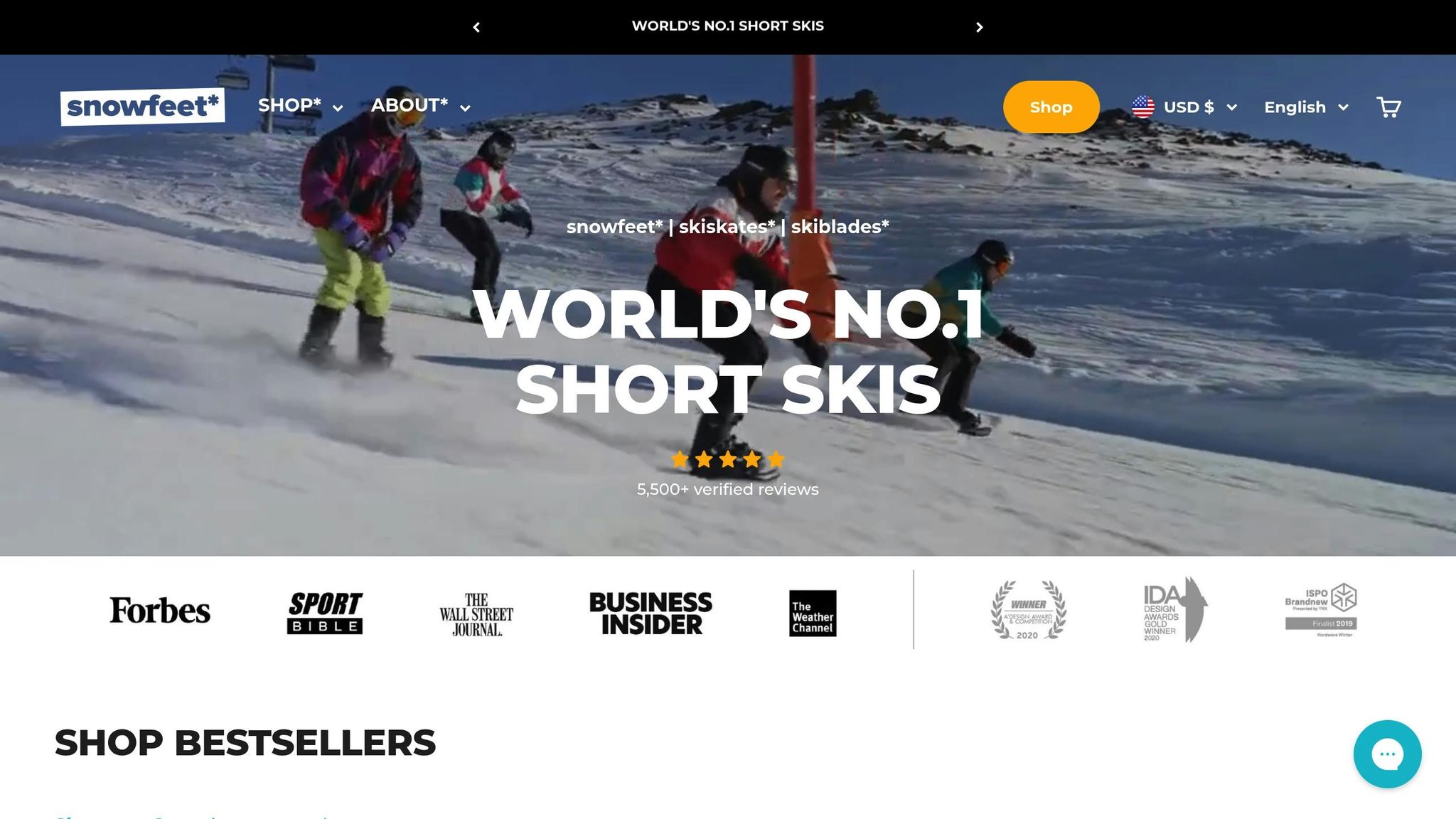
Each type of winter gear has its strengths and is suited for different scenarios. Here's a quick breakdown to see how they compare:
| Feature | Traditional Snowshoes | Skis | Snowboards | Snowfeet* |
|---|---|---|---|---|
| Weight | 3–5 lbs per pair | 8–12 lbs per pair | 6–10 lbs per pair | 2–3 lbs per pair |
| Portability | Bulky, hard to pack | Very bulky, need roof rack | Bulky, need special bag | Fits in a backpack |
| Learning Curve | Easy, natural walking | Steep, requires lessons | Moderate to steep | Fast, intuitive |
| Terrain Versatility | Trails, backcountry | Groomed slopes mainly | Groomed slopes mainly | Slopes, trails, backyards |
| Footwear | Special snowshoe boots | Ski boots required | Snowboard boots required | Regular winter shoes |
| Cost Range | $100–$400 | $300–$1,500+ | $250–$800+ | $250–$775 |
Weight and portability are game-changers when planning a winter trip. Skis and snowboards are heavy and often need specialized transportation like roof racks or oversized bags. Snowfeet*, on the other hand, are small enough to fit in your backpack. This makes them perfect for travelers, apartment dwellers, or anyone who values convenience.
The ease of learning is another big factor. Snowshoeing is as simple as walking, while skiing and snowboarding can take days of practice and even lessons to get the hang of. Snowfeet* strike a balance, offering the thrill of skiing with a much shorter learning curve. You can be gliding around in no time.
Finally, versatility is where Snowfeet* really stand out. Skis and snowboards are designed for groomed slopes at resorts, limiting where you can use them. Snowfeet* offer flexibility, working on ski slopes, hiking trails, or even in your backyard. This opens up endless possibilities for enjoying snow, without needing to stick to expensive resorts.
These comparisons highlight why Snowfeet* and snowshoes are solid options for winter fun, depending on your goals and preferences.
Why Snowfeet* Is Different
Snowfeet* are shaking up the winter sports scene by proving that smaller can be better. Founded by Zbynek and Michael, the company is leading the way in skiskating - a fresh take on winter activities that could one day make its way to the Olympics.
What sets Snowfeet* apart? For starters, they’re incredibly compact. The Mini Ski Skates, measuring just 38 cm (about 15 inches), weigh only 2–3 pounds and can easily fit into a standard backpack. Compare that to traditional skis, which are often 5–6 feet long and require special carriers. With Snowfeet*, you can hop on a bus, train, or plane without the hassle of bulky gear.
Another standout feature is their user-friendly design. Unlike skis or snowboards, which require dedicated boots, Snowfeet* work with your regular winter shoes. This makes them a budget-friendly and accessible option for anyone looking to try something new.
The learning curve is also much gentler. Most people can pick up Snowfeet* in just one session, making them perfect for families, beginners, or anyone who wants to skip the frustration and jump straight to the fun.
Snowfeet* are available in different models to suit varying preferences and skill levels. Prices range from $250 for the Mini Ski Skates to $775 for the 120 cm (around 47 inches) Short Skis. These shorter skis enhance agility, making them a fun and dynamic choice for winter sports enthusiasts.
But Snowfeet* isn’t just about equipment - it’s about creating a whole new way to enjoy winter. By blending elements of skiing, skating, and snowshoeing, Snowfeet* open the door to winter sports for people who might otherwise feel limited by cost, skill level, or gear requirements. It’s a fresh approach that’s making snow days more accessible and exciting for everyone.
Getting Started with Snowshoes and Snowfeet*
Now that you’ve got a feel for how snowshoes and Snowfeet* stack up against other winter gear, let’s dive into what you need to know before heading out on your first snowy adventure. The right gear, a little safety prep, and smart location choices can make all the difference between a fun day in the snow and a frustrating one.
What to Wear and Bring
Layering is the name of the game when dressing for snow. Start with a moisture-wicking base layer - think merino wool or synthetic materials. Skip cotton entirely; it soaks up moisture and loses all warmth when wet. Add a middle layer for insulation, like fleece or down, and top it off with a waterproof outer shell to keep wind and snow out.
For footwear, waterproof hiking boots work well with snowshoes, while Snowfeet* are designed to pair with regular winter shoes - no need for anything fancy. Waterproof gaiters are a smart addition to keep snow from sneaking into your boots and pants.
Don’t forget your hands and head! Insulated, waterproof gloves are a must (pack a spare pair just in case), and a warm hat that covers your ears is non-negotiable. Add sunglasses or goggles to shield your eyes from the intense glare bouncing off the snow.
Trekking poles can be a lifesaver for balance, especially if you're using traditional snowshoes. Snowfeet* users, on the other hand, often find they need less support thanks to the natural movement these mini skis allow.
Pack the essentials in a waterproof backpack: extra layers, snacks, water, and a first aid kit. Hand and foot warmers are a great backup for really cold days, and a thermos of hot tea or cocoa can be a morale booster when you stop for a break.
Once you’re dressed and packed, it’s time to brush up on safety and navigation tips to ensure a smooth outing.
Safety and Navigation Tips
Before you head out, check the weather and any avalanche warnings. Even if you’re sticking to well-trodden trails, knowing the conditions will help you prepare better.
Bring more water and snacks than you think you’ll need. Cold weather and physical activity burn through energy fast. High-energy snacks like nuts, dried fruit, or energy bars are perfect for quick fuel.
Know your limits. Winter hiking is tougher than summer, so start small. Go for shorter distances and easy terrain until you’re more confident. Snowshoes require more effort than walking, while Snowfeet* tend to be more efficient once you get used to them.
Snow can make navigation tricky, covering familiar landmarks and trails. Carry a map, compass, or GPS - and know how to use them. Smartphone apps can help too, but cold weather drains batteries fast, so bring a backup power source or stick to traditional tools.
If your route crosses frozen water, avoid areas with questionable ice. Ice thickness can vary wildly, and what looks sturdy might not hold your weight. When in doubt, find another way.
Lastly, always let someone know your route and expected return time. It’s a simple step that could be life-saving if something goes wrong.
With these safety basics down, it’s time to choose the perfect spot to try out your snowshoes or Snowfeet*.
Best Places to Start Snowshoeing
Your backyard or local parks are great places to start. Familiar surroundings mean you can focus on getting used to the gear without worrying about getting lost. Many city and county parks also maintain winter trails that are beginner-friendly.
State and national parks across the U.S. offer a variety of snowshoe trails for all skill levels. For example, Yellowstone National Park has guided snowshoe tours and well-marked trails for solo adventures. Rocky Mountain National Park in Colorado features everything from easy loops around lakes to more challenging backcountry routes.
If you’re in the Northeast, Acadia National Park in Maine offers stunning coastal views in winter, while Adirondack State Park in New York has an extensive network of trails. Out west, the Pacific Northwest boasts gems like Mount Rainier National Park and Crater Lake National Park in Oregon.
Nordic centers and cross-country ski areas are another excellent option. They often have groomed trails, rental gear, and amenities like warming huts and restrooms. These spots are perfect for beginners who want a bit more structure without the crowds of major ski resorts.
Golf courses can also be surprising winter playgrounds. Once covered in snow, their open, rolling terrain becomes a safe and easy practice area, free from avalanche risks or confusing trails. Many courses allow winter activities when snow conditions are right.
For Snowfeet* enthusiasts, ski resorts open up even more possibilities. Unlike snowshoes, which aren’t suited for ski slopes, Snowfeet* work beautifully on groomed runs. Resorts with chairlifts and beginner-friendly slopes offer a whole new way to enjoy winter. Smaller, family-oriented ski areas often have affordable day passes and a more relaxed vibe, making them ideal for first-timers.
Finally, don’t overlook local hiking trails you already know. Familiar summer routes take on a whole new feel in the snow. The advantage? You already know the distances and landmarks. Just remember, snow can make even easy trails more challenging and time-consuming.
The key is to start somewhere easy and build your confidence. Whether you’re strapping on snowshoes for a backcountry trek or clipping into Snowfeet* for some versatile fun, starting close to home sets the stage for a great winter adventure.
Start Your Winter Adventure
Who says winter is for hibernating? With the right gear, stepping into a snowy wonderland can be easier (and more fun) than you'd expect. Whether you’re strapping on traditional snowshoes or trying something new like Snowfeet*, winter adventures are within reach.
Let’s talk snowshoes. They’re a simple, no-fuss way to get started. Designed to work with your natural walking motion, they don’t require much training, making them perfect for beginners. Modern snowshoes are lightweight, sturdy, and comfortable, opening up trails that might otherwise be tough to tackle in regular boots. They’re your ticket to exploring snowy paths with ease.
On the flip side, if you’re feeling adventurous, Snowfeet* offers a compact and versatile alternative. These mini ski skates bring a fresh twist to winter sports. While a basic pair of snowshoes might cost less, Snowfeet* Mini Ski Skates start at around $250, offering features tailored for a more dynamic experience. Both options cater to different styles, so you can pick what suits your vibe best.
Not sure where to begin? Start small. Test your gear in familiar spots - a local park, a nearby trail, or even your backyard if there’s enough snow. Before heading out, check the weather, let someone know your route, and pack smart. Extra layers, plenty of water, and a few snacks are must-haves since winter outings can take more energy than you’d think.
Winter has a way of transforming the ordinary into something magical. A snow-covered trail feels peaceful and serene, while the crisp air and quiet surroundings set the stage for unforgettable moments. Whether you’re gliding on Snowfeet* or enjoying the steady rhythm of snowshoes, the experience is bound to leave you smiling.
So, this winter, don’t just watch the snow from your window - step into it. Gear up, head out, and let the adventure begin. The snow is waiting for you.
FAQs
How do I choose the right size and type of snowshoes for my winter adventures?
Choosing the right snowshoes comes down to a few key factors: your weight (including gear and clothing) and the type of snow you'll be trekking through. If you're heading into deep, powdery snow, go for larger snowshoes - they'll help you stay on top of the snow by providing better flotation. On the other hand, smaller snowshoes are a better fit for packed trails where you don't need as much surface area. And if you're carrying a heavy backpack or just naturally on the heavier side, larger sizes are your best bet for proper support.
Don't forget to think about the terrain and how you'll be using them. For faster-paced activities like running, lightweight and compact snowshoes are a great choice. But if you're tackling steep slopes or icy patches, you'll want something sturdier with aggressive traction to keep you steady. Matching your snowshoes to your specific adventures is the key to having a great time out there.
How are Snowfeet different from traditional snowshoes for winter activities?
Snowfeet bring a fresh twist to winter adventures, offering a sleek alternative to traditional snowshoes. They’re compact and lightweight, which means they’re a breeze to carry and store - no more lugging around bulky gear. Plus, while traditional snowshoes are built mainly for walking on snow, Snowfeet mix things up by blending the thrill of skiing with the glide of skating.
Another big win? Snowfeet work with any winter boots - no need to invest in special footwear. They’re also crafted for easy turning and a faster learning curve, making them perfect for beginners or anyone wanting a fun, hassle-free way to dive into winter sports. While snowshoes are ideal for long treks, Snowfeet add a whole new layer of fun and versatility to snowy landscapes.
What safety tips should I follow when snowshoeing or using Snowfeet on different terrains?
Staying safe while snowshoeing or using Snowfeet is key to having a great time out in the snow. First off, always let someone know where you’re headed and avoid going solo - it’s just smarter to have a buddy. Make sure your gear is adjusted properly and fits snugly, so you’re not fiddling with it mid-adventure. For snowshoeing, stick to trails that match your experience level, and always keep an eye on the weather - it can change fast out there.
If you’re trying out Snowfeet, a helmet is a must. Safety first, right? Start on easy, gentle slopes to get the hang of it, and as you gain confidence, you can move on to steeper or more challenging terrain. These nifty little gadgets are lightweight and pretty simple to use, but they do take some practice. Take it slow, especially if you’re dealing with icy patches or steep areas. Caution goes a long way in keeping the fun going.







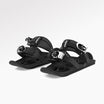
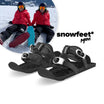
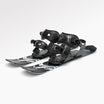
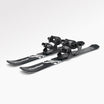

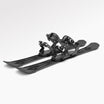

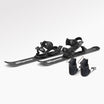







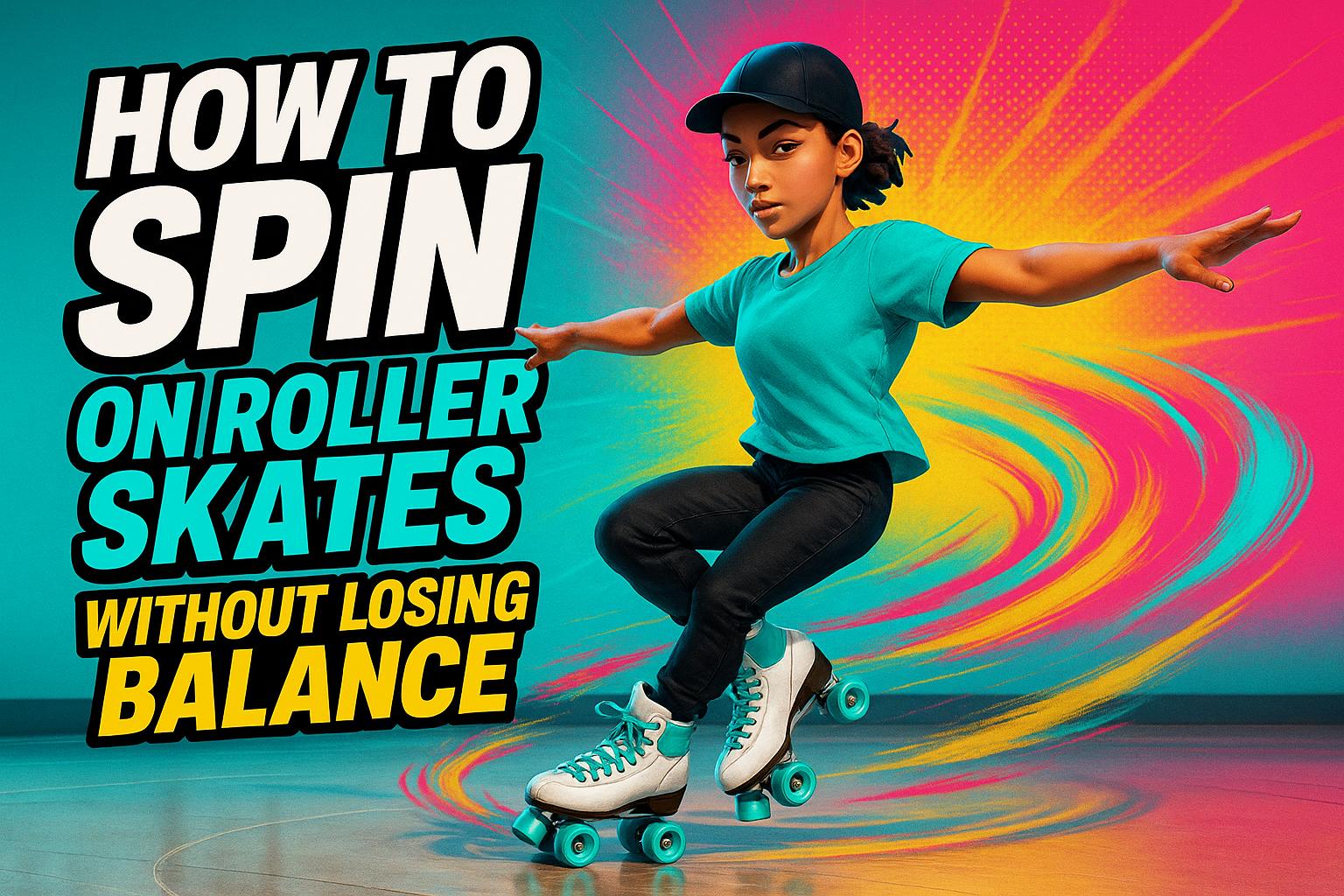





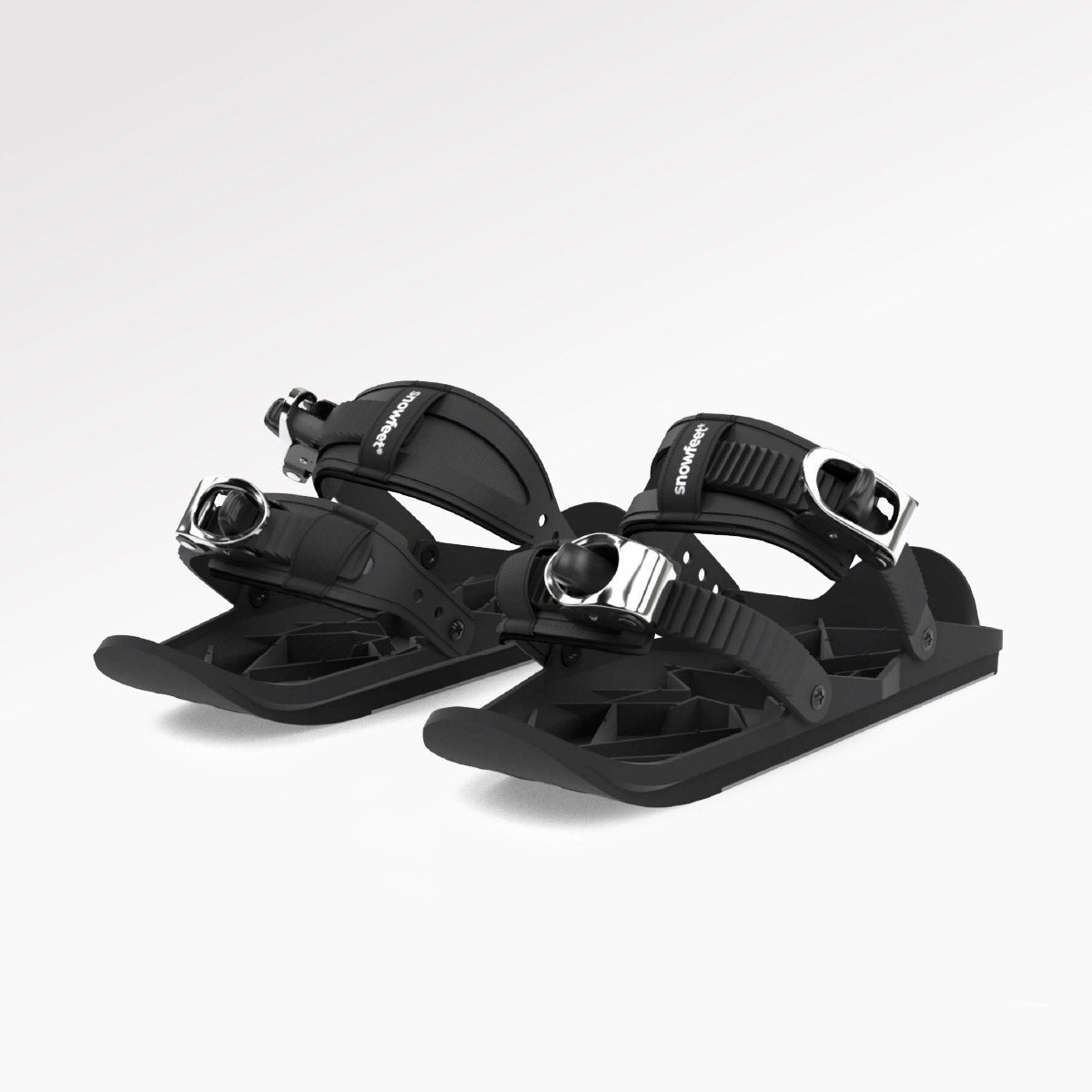
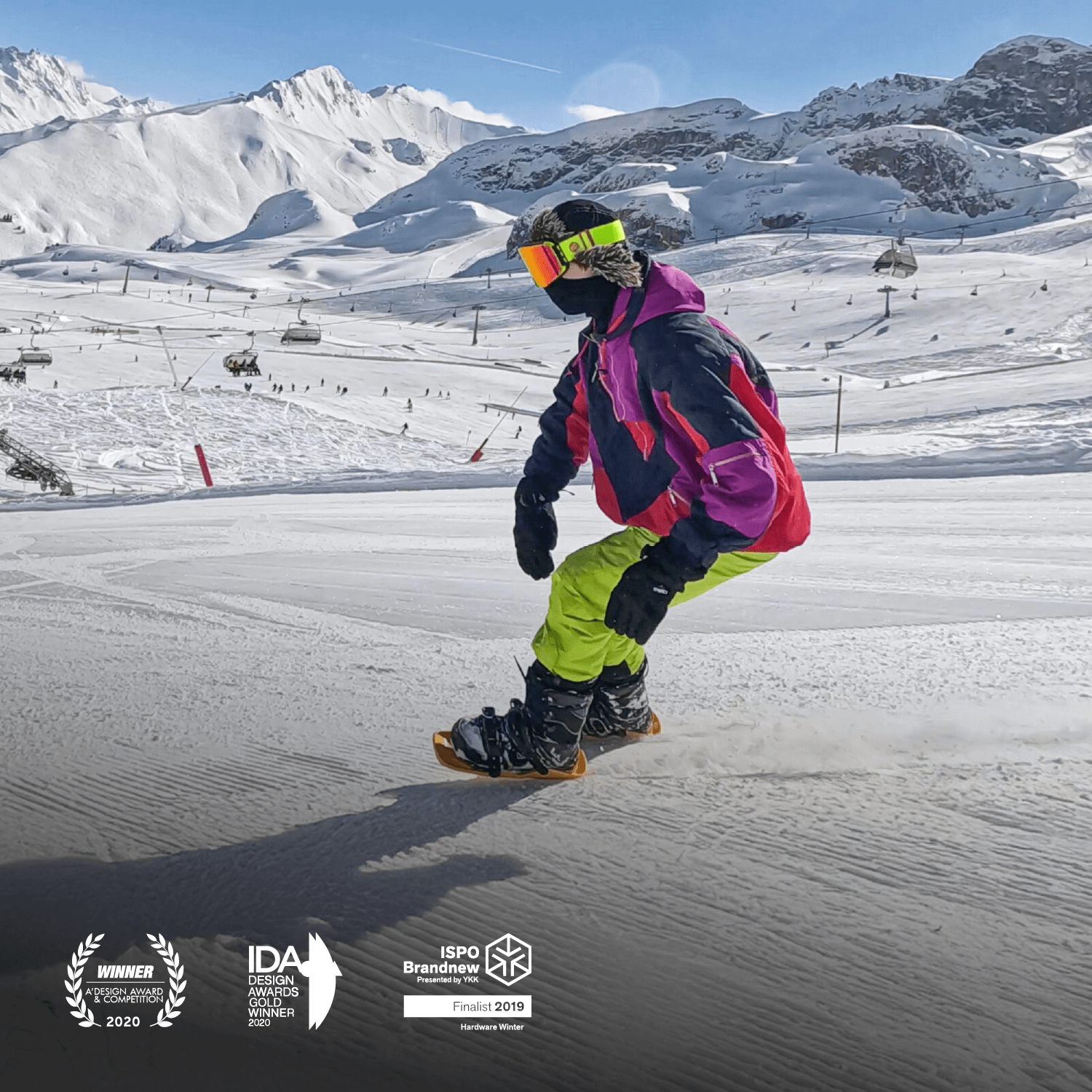
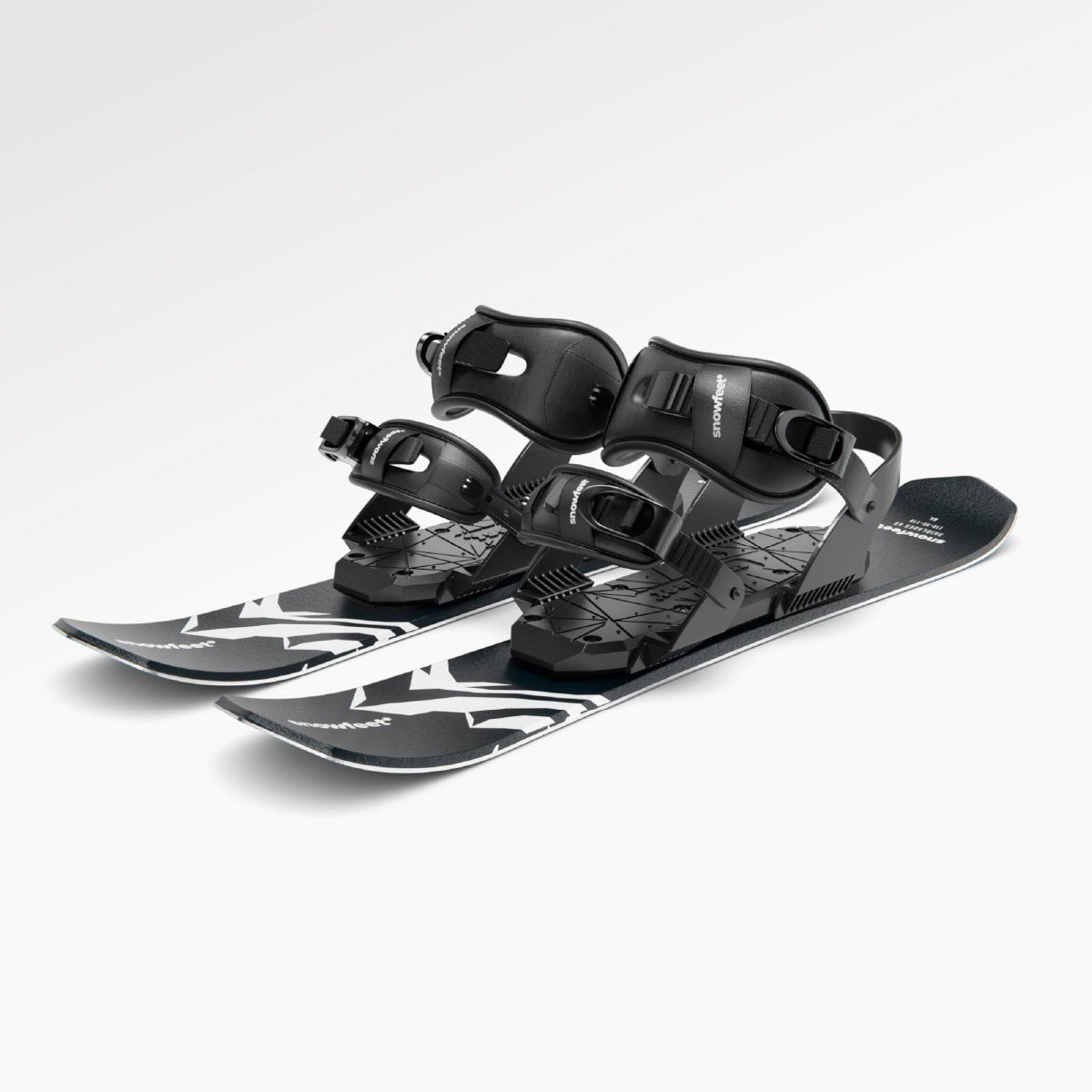

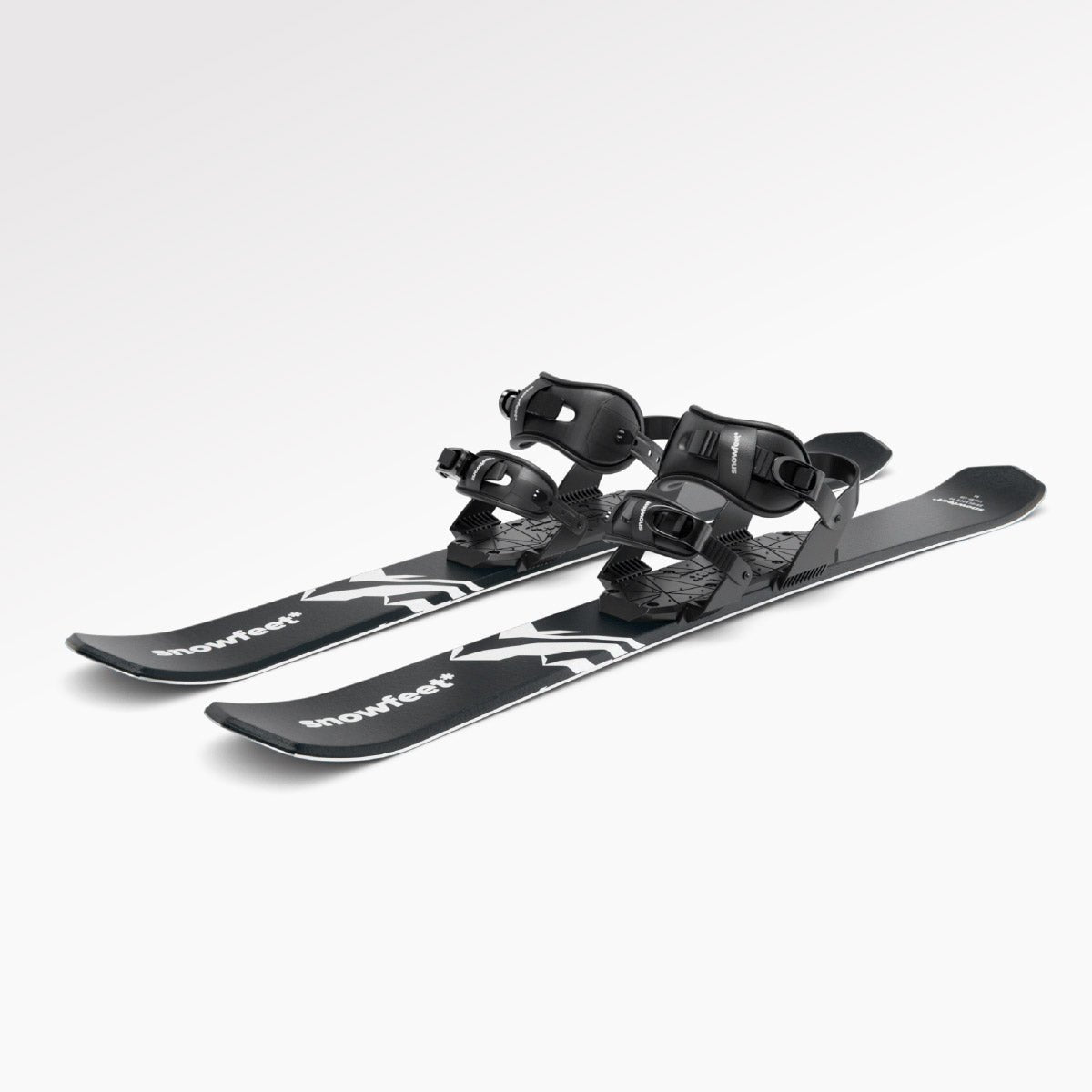

Deja un comentario
Este sitio está protegido por hCaptcha y se aplican la Política de privacidad de hCaptcha y los Términos del servicio.